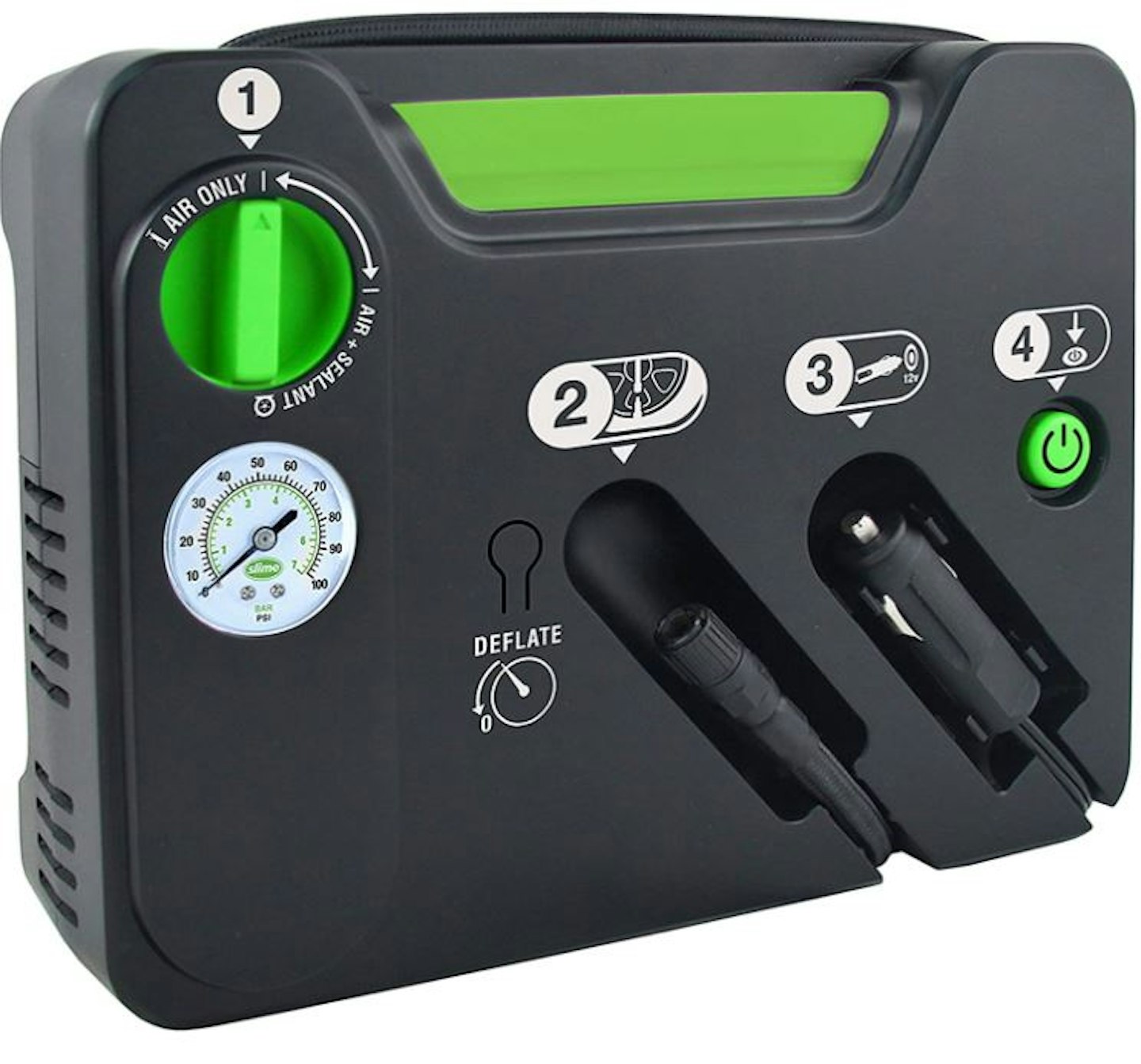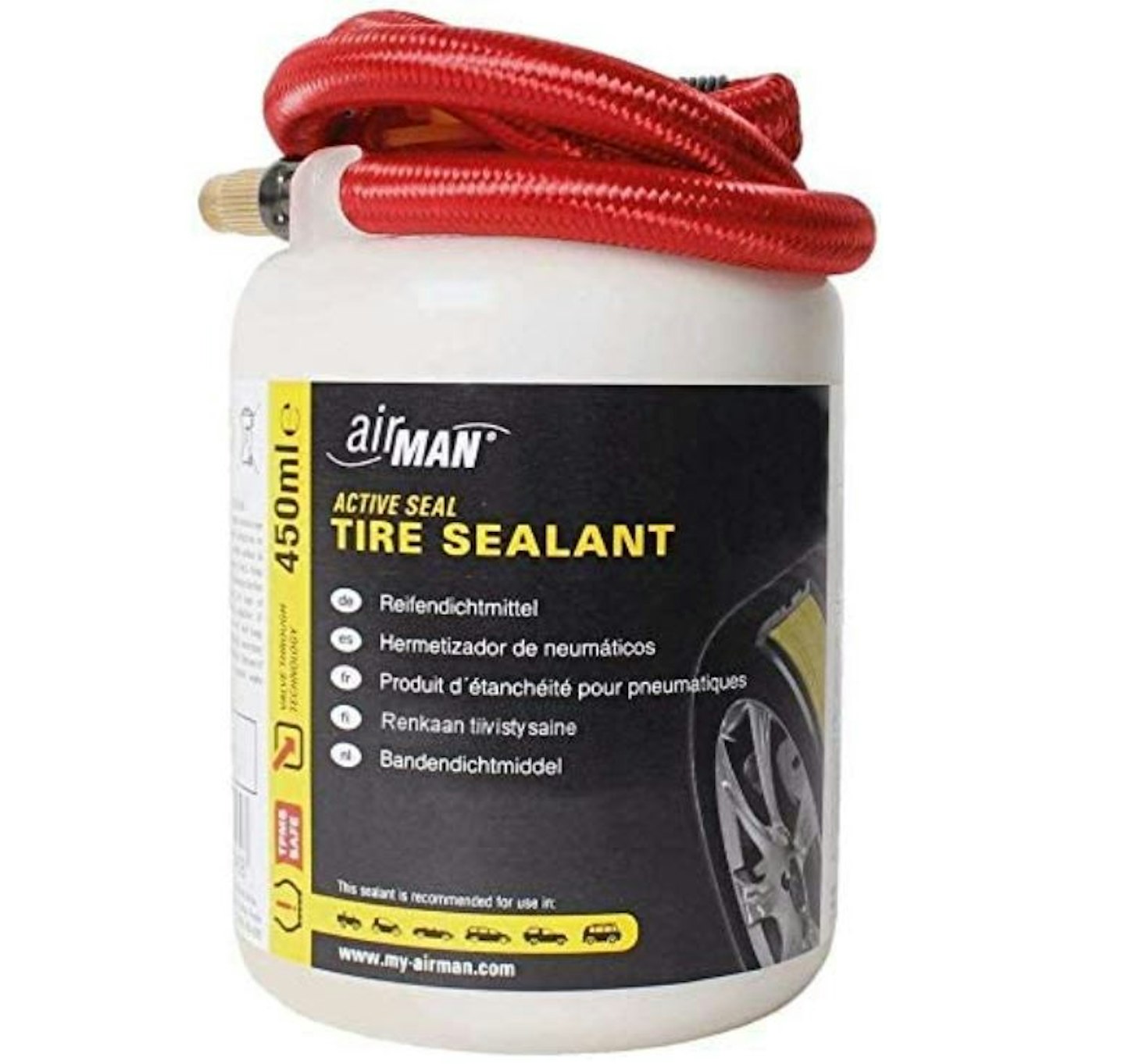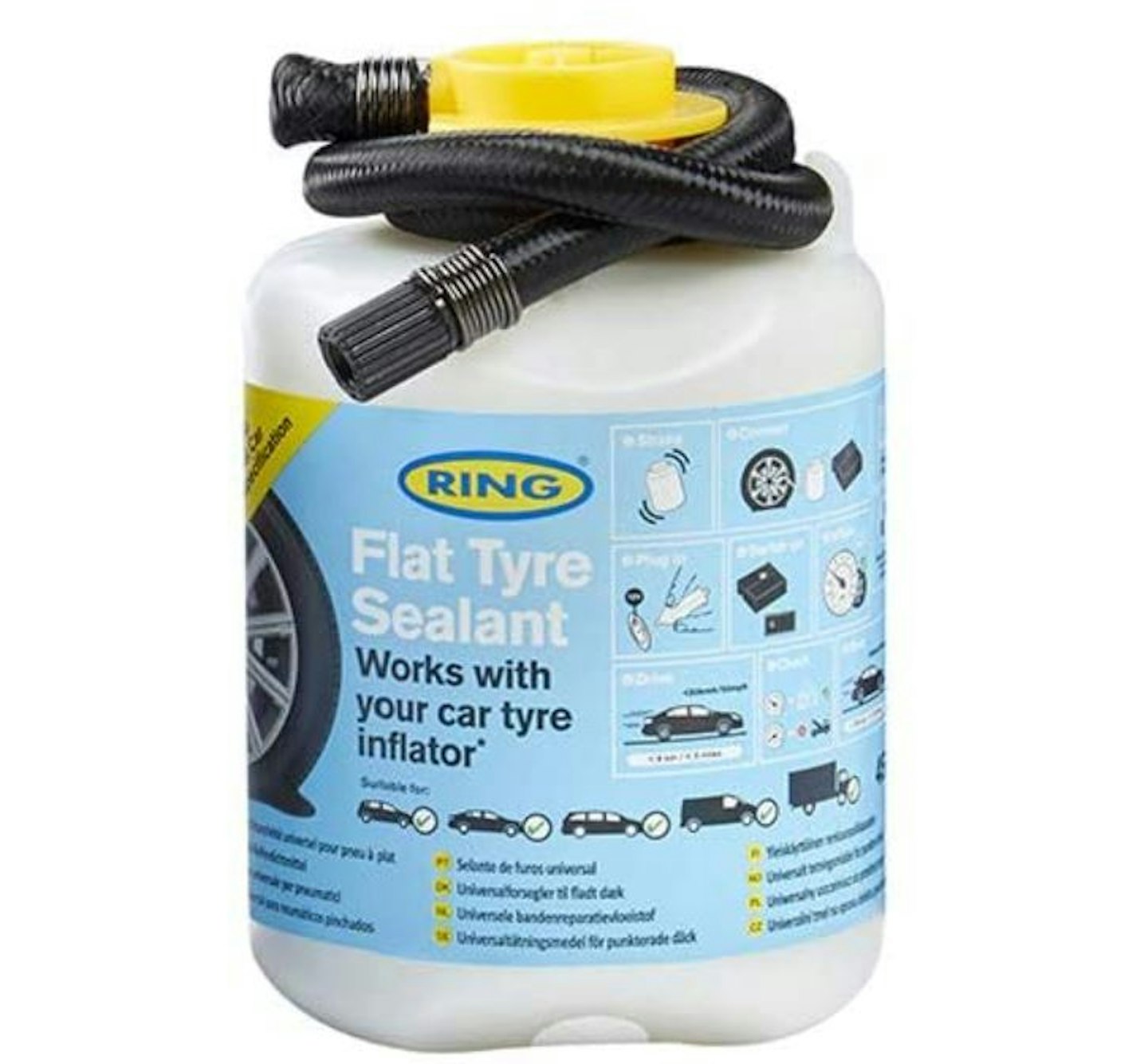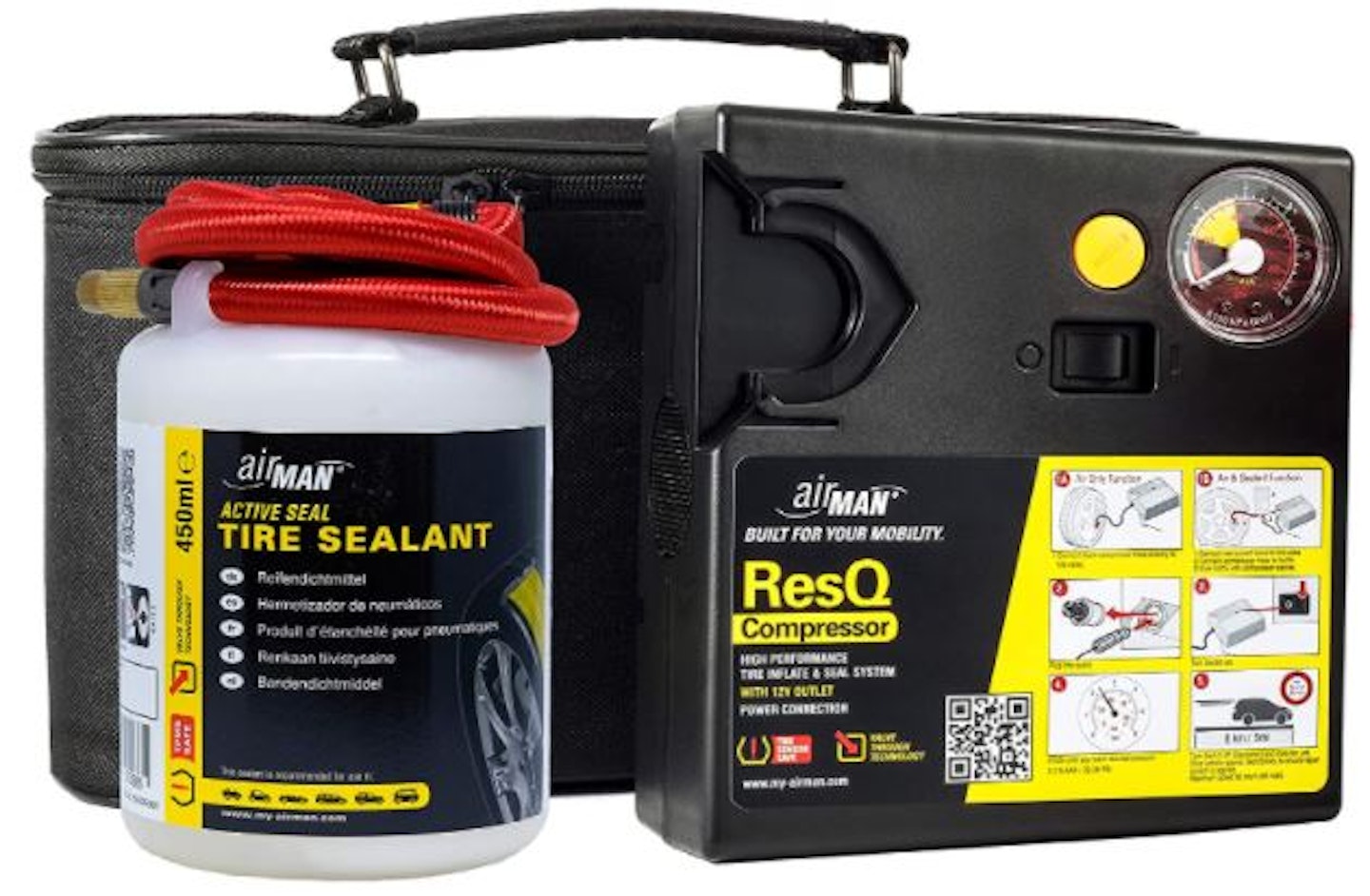You saw floppy disks replaced by flash drives and Myspace be replaced by Facebook. Tyre sealants have largely replaced spare tyres in new cars because it is easier to use for the person who's suffered a puncture and cheaper for car manufacturers.
You'll have likely noticed the absence of a spare wheel or space-saver if you've bought or PCP'd a new car sometime in the recent past and instead found a bottle of goop and 12V compressor in its place. But what is this stuff? How does it work? Is any good? How do you use it? And which tyre sealants are best? All valid questions and ones we shall answer here.
What is tyre sealant and how does it work?
Tyre sealant is an adhesive gel that gets injected into a punctured tyre. It plugs small punctures quickly and allows you to get back on the road within 10 or 15 minutes having reinflated the tyre with a tyre compressor (either supplied or one you already own).
Tyre sealant (at least, the ones we recommend) are non-toxic and biodegradable and can be washed out of the tyre to allow for a professional puncture repair, if that is an option.
Yes, but is tyre sealant any good?
For a temporary fix, yes absolutely. But remember is indeed an effective temporary fix for punctures that allows you to get off the hard shoulder and to the nearest garage to get a replacement tyre or puncture repair. As such, tyre sealants come with a recommended maximum distance you should drive with it, this is usually around 100 miles or so.
Tyre sealant isn't magic either. A tyre with a hole you could fit a tennis ball in is going to require more than some adhesive gel. You can throw all the tyre sealant you want at it but you'll still end up calling roadside assistance. Tyre sealants are capable of dealing with punctures of around 6mm (or a quarter of an inch).
The best tyre sealants
Editoru2019s pick
Max puncture size: 6mm | Max driving distance: 125 miles | Tyre Pressure Monitoring System Safe
This is the brand used by a number of car manufacturers themselves, including Ford, Volkswagen, Peugeot, and Volvo. It comes with a compressor and is an all-in-one system where the sealant is pumped into the tyre by the compressor and very effective.
The sealant is non-toxic and water-based and can be rinsed out to allow for a proper puncture repair. The volume of sealant here is 450ml - enough for wheels up to 21". If your car has smaller wheels, there is a smaller kit suitable for wheels up to 17".
Easiest to use

Max puncture size: 6mm | Max driving distance: 100 miles | Tyre Pressure Monitoring System Safe
Slime is another highly trusted name in tyre care. Its tyre sealant works in a similar way to the AirMan kit and to a similar effect. This compressor has the replaceable sealant refill in it, so all you need to do is plug in in to a 12V socket and to the tyre valve and press go. Like the AirMan gel, this can also be removed in order to undertake a permanent puncture repair, but Slime advises it needs to be removed within three days.
Best tyre sealant

Max puncture size: 6mm | Max driving distance: 125 miles | Tyre Pressure Monitoring System Safe
That's right, it's exactly the same sealant found in the AirMan kit above just without the accompanying tyre compressor. It's ideal if you've already got a tyre inflator (it's compatible with most) or need a fresh batch of the stuff.
Recommended alternative

Max puncture size: 6mm | Max driving distance: 125 miles | Tyre Pressure Monitoring System Safe
Ring Automotive is the automotive aftermarket equivalent of a ham and cheese sandwich: reliable and proven. There are a number of its products we like in addition to its tyre sealant, including tyre inflators and jump starters. The sealant is almost identical to that of the AirMan sealant - non-toxic and can be used with most tyre inflators.
How to use a tyre sealant
It’s easier than changing a tyre. Depending on the brand of sealant you will either insert the sealant first and then inflate a tyre, or it’ll be an all in one, where you plug in the compressor’s 12V plug into the car’s socket, attach the bottle of sealant to the compressor, attach the compressor the tyre valve and switch on the compressor. The tyre will both be repaired and inflated without scraped fingers and profanities.
Other things you should know
Having repaired a puncture with sealant, we hope common sense dictates that you alter your driving style to err considerably more on the side of caution. Keep your speed as low as practical - Ring Automotive suggests no more than 50mph for its sealant.
The maximum distance one can drive on a repaired tyre is a guideline. There are factors that vary this so it pays to drive as little distance as possible on the repaired tyre. For example, a puncture that is positioned in the middle tread will be easier to seal and therefore be stronger than one on the sidewall. And naturally, larger punctures are a bit harder to seal and will not last as long as smaller ones.
Tyre sealants do have expiry dates. It certainly pays not to use a sealant that has gone beyond its expiry date because it will be less likely to properly plug a puncture effectively and, well, you'll just experience some déjà vu.

